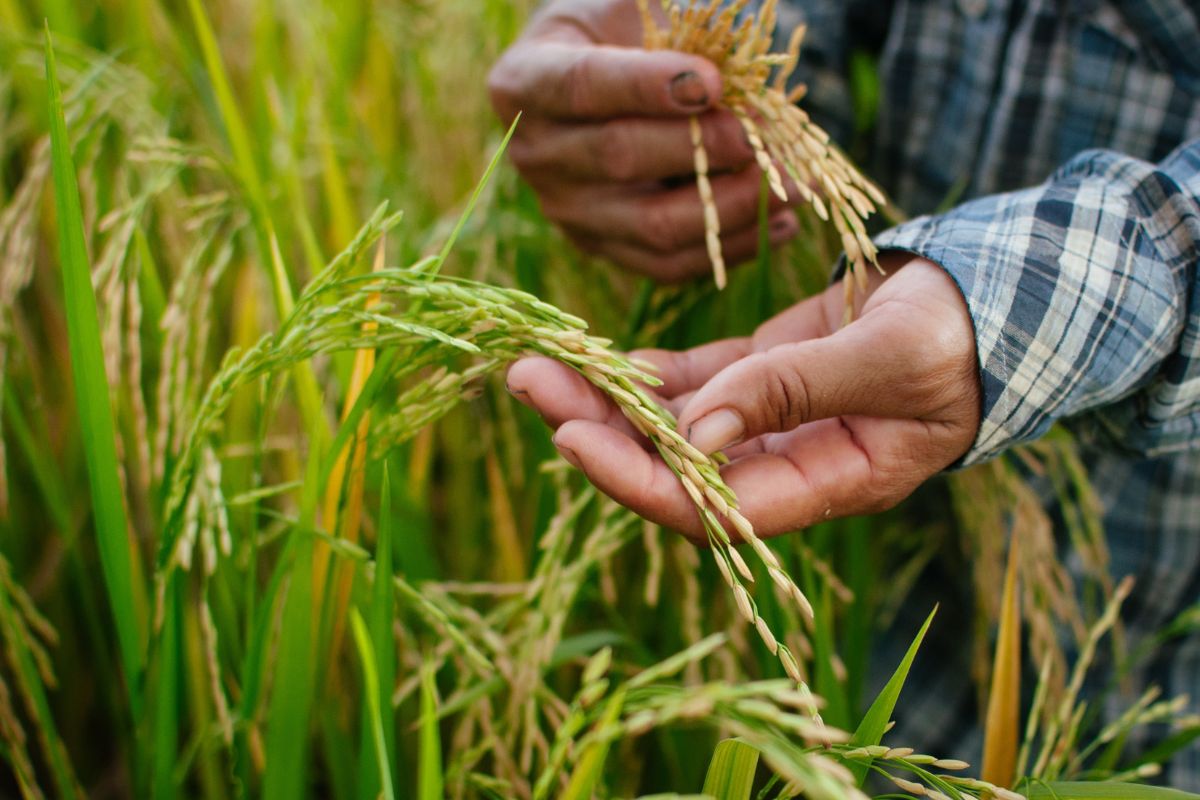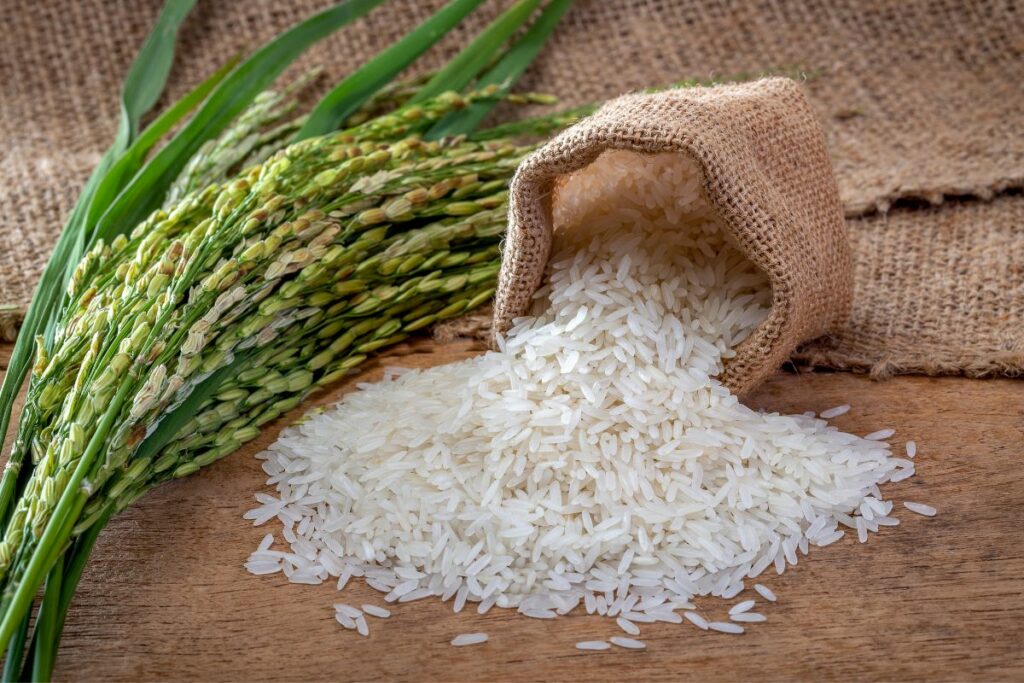Rice is an important food used in many different cultures around the world. Even though it’s a staple ingredient, there is debate over whether rice should be classed as a seed, grain, or even a vegetable.
So, is rice a grain or a seed?
If we go by present USDA regulations, the way rice is used in dishes and its nutritional value would class rice as a grain.
Despite this, science views rice as part of three categories, a seed, a grain, and a vegetable.
We’ll cover the answer to whether rice is a seed or a grain in this post. This includes the difference between seeds and grains, whether rice is part of either category, and the correct interpretation of what rice is.
What’s The Difference Between Seeds And Grains?
Seeds and grains are connected, but they are botanically different from one another. Grains are not seeds, as their nutritional content and digestibility levels differ.
Sprouted and germinated seeds vary even more, as they will have fully transformed, chemically and physically, through germination.
For instance, regular barley has little nutritional value and is just 5% digestible. On the other hand, sprouted barley seeds are 95% digestible.
They have a lot of nutritional value, thanks to their enzymes, probiotics, and antioxidants.
Grains are edible fruits from plants. These tend to be small with a hard exterior, sourced from grassy crops. Grains form in groups at the summits of adult plants, like rice, oat, and wheat.
Grains may have medium to low digestibility and nutritional value based on their type. This is why lots of pet owners choose to purchase food that contains zero grains.
Seeds are known as embryonic plants coated with a seed coat. These are created from ripe plant ovules following fertilization.
Seeds are full of the nutrients needed to create new plants. The nutrients are inactive until the seeds have been germinated. They then become active to be highly digestible, being a nutritional source for anyone that consumes them.
Is Rice Part Of The Seed Family?
Rice is taken from areas of a plant that can turn into new plants before they are processed. This means that rice is a seed, just like a lot of legumes and nuts that we consume.
The botanical term for seeds are components of plants that will grow into new plants when situated in the right setting.
For instance, if an acorn falls to the earth and is exposed to optimum conditions, the acorn will develop into a new oak tree.
If a rice plant hasn’t been processed yet, you can take the grains of rice from it and plant them, allowing the grains to develop into a new rice plant.
Following this definition, rice is technically a seed, but it isn’t the best term for it.
The rice we consume has been refined to eliminate its outer husk, turning it into an edible product. If rice was being used as a seed, it would require a different process.
As we don’t process rice grains in the way that we do with seeds, the word ‘seed’ isn’t the best term for rice.
Is Rice Part Of The Grain Family?
While seeds have a botanical definition, as mentioned above, grains do not have one. The term is a part of everyday language that covers particular seeds and vegetables that we eat, like rice.
The way we use rice in our diets, along with its nutritional content, is why rice is labeled as a grain. This isn’t down to any scientific reasoning or official classification.
There is no formal or botanical definition covering the term grain. The USDA also uses the term ‘grain’ to classify different foods, like rice.
Grains are separated into two main groups, unrefined and refined. Rice can fit into both of these classes.
Whole grains are composed of the complete grain kernel, including the bran, endosperm, and germ. Brown rice is one of these examples, as well as whole wheat flour, whole cornmeal, and oatmeal.
Refined grains are processed through a procedure known as milling. This eliminated the germ and bran from the grain’s kernel.
This leads to a product with a finer consistency and a greater shelf life compared to whole-grain items.
The milling process also eliminates important nutritional items within the grain, like dietary fiber, B vitamins, and iron. White rice is a good example, as well as white flour, white bread, and degermed cornmeal.
Is Rice Part Of The Vegetable Family?

You may not think of rice as a vegetable, but the definition states a vegetable is any plant that is cultivated to be eaten. Following these guidelines, rice is part of the vegetable family!
Despite this, the majority of people don’t class rice as a vegetable, and the USDA does not consider it one either.
The USDA state that there are five primary classes of vegetables:
- Orange and red vegetables
- Peas and beans
- Starchy vegetables
- Dark green vegetables
- Other vegetables
Examples of orange and red vegetables are bell peppers and carrots. Potatoes are part of the starchy vegetable subgroup, while dark green ones are broccoli and kale.
The USDA doesn’t fit rice into any of these classes and it seems unlike any groups above.
What Is The Best Term For Rice?
While rice fits into the grain, seed, and even vegetable categories, the term ‘grain’ is the best definition for rice.
Even though rice grains are the seeds of the rice plant, we remove these components when we prepare rice. Rice is also meant for consumption more than for planting, so the term seed isn’t the best word for rice.
It’s a better idea to refer to rice as a grain. Its structure and purposes are just like wheat, another food that we would call a grain. The grain definition also covers other harvested seeds, like oats and barley.
The Bottom Line
Rice can technically fit into the seed, grain, and vegetable groups, but the term grain is the best definition for rice.
The botanical description for seeds and vegetables does cover rice, but rice doesn’t match any of the USDA vegetable classes.
We also remove the seed part of the rice plant when we prepare the grains, so there’s no point in calling it a seed.
The grain category is the best one for rice. It has a similar purpose and form to wheat, another type of grain.
Grains come in two main groups, whole and refined. Rice can be part of both of these groups, with brown rice being whole grain and white being refined.








